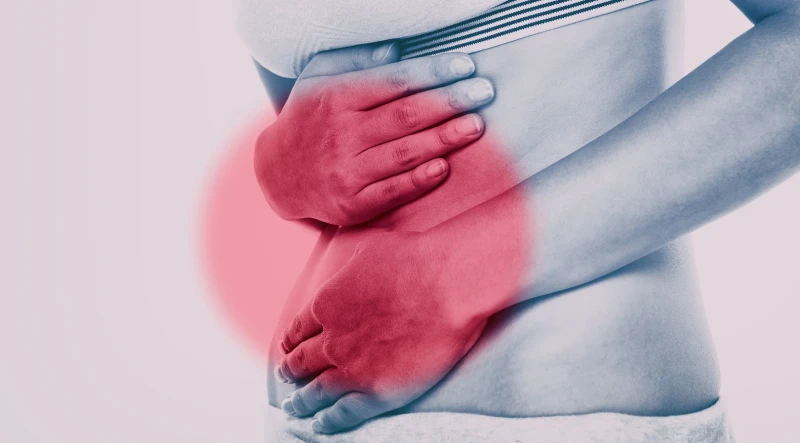Gallbladder surgery is often necessary to treat conditions like gallstones, inflammation, or bile flow issues. These conditions can cause severe discomfort and lead to complications if left untreated. At Slim Surgical, our experienced surgeon focuses on minimally invasive procedures designed to provide quicker recovery and less discomfort after surgery.
Symptoms like pain, nausea, and bloating may need evaluation.
Minimally invasive surgery removes the gallbladder with small incisions.
Advanced tools improve precision and outcomes.
Personalized consultations ensure the right treatment plan.


Gallbladder surgery, also known as cholecystectomy, removes the gallbladder, a small organ beneath the liver. This procedure is often recommended for patients with gallbladder-related conditions such as gallstones, inflammation (cholecystitis), or bile flow issues. These conditions can cause severe pain, digestion problems, or complications if untreated.
The most common method is laparoscopic cholecystectomy, which uses small incisions and specialized tools for precise removal. This minimally invasive approach offers shorter recovery times, less pain after surgery, and minimal scarring. At Slim Surgical, this method is the preferred standard for effective gallbladder surgery.
Cholecystectomy, or gallbladder removal surgery, treats conditions like gallstones and inflammation using minimally invasive techniques. At Slim Surgical, we focus on personalized care and advanced methods for effective results.
We start with thorough evaluations, including consultations and tests like ultrasounds or MRIs, to confirm gallbladder issues and assess the need for surgery.
We will provide clear instructions for fasting and medication adjustments to ensure a safe procedure.
The procedure is performed through small incisions using laparoscopic or robotic tools, offering precision, less discomfort, and quicker recovery.
Most patients return home the same day. We offer a recovery plan, including dietary advice, activity guidelines, and follow-up care to support long-term health.
A cholecystectomy, or gallbladder removal surgery, is often recommended when the gallbladder causes significant health issues or stops functioning properly. Conditions like gallstones, chronic inflammation, or gallbladder dysfunction can result in pain, digestive problems, and complications that require surgical treatment.




If you have symptoms like persistent pain, nausea, or bloating, consulting a surgeon can help determine if surgery is necessary. At Slim Surgical, our experienced surgeon provides thorough evaluations and personalized care to identify the best treatment for your condition. Early treatment can ease symptoms, prevent complications, and improve your quality of life.
At Slim Surgical, we focus on treating a range of gallbladder-related conditions with minimally invasive techniques. Our aim is to relieve symptoms and improve digestive health through personalized care.
We treat gallstones that cause pain, nausea, or digestive problems. Using advanced diagnostics, we evaluate the condition and offer effective options like laparoscopic or robotic cholecystectomy to prevent further issues.
For sudden inflammation of the gallbladder, we provide prompt surgical solutions. This condition can cause severe pain and complications if untreated. Our minimally invasive approach offers faster relief and recovery.
When gallbladder dysfunction disrupts bile flow and causes ongoing discomfort, we provide specialized care. This may include gallbladder removal to restore normal digestion.


Recovering from gallbladder surgery is a straightforward process, especially with the use of minimally invasive techniques. Here’s an overview of what to expect during your recovery journey:
Mild soreness and fatigue are normal. Ambulation is encouraged within hours of surgery as it helps promote recovery and healing. Most patients choose to follow a low fat diet initially.

Discomfort decreases and energy improves. Most have already returned to work.

By week 6, you have no weight restrictions and may resume ALL activities. Some individuals have difficulty with fat-containing foods initially and this may result in some loose stools, but this often improves gradually over time (usually within a few weeks, but may take up to a few months).
Gallbladder surgery requires precision and advanced technology for effective results. At Slim Surgical, we focus on patient care and efficient treatment through modern techniques.



We perform minimally invasive laparoscopic and robotic-assisted surgeries for faster recovery.

From diagnosis to recovery, our care is personalized for each patient.
Our board-certified surgeon is an expert in gallbladder and biliary conditions.
Compassionate care is at the core of our approach to ensure your comfort.
At Slim Surgical, we provide safe and effective gallbladder surgery solutions designed to meet your needs.
Gallbladder surgery, or cholecystectomy, is generally safe, but potential complications include infection at the surgical site or internally, bile leakage causing abdominal pain and fever, bleeding, and rare injuries to surrounding organs like the bile ducts or intestines. Other risks include blood clots (deep vein thrombosis), retained bile duct stones, post-cholecystectomy syndrome with ongoing digestive issues, and hernias at incision sites. Though uncommon, complications related to general anesthesia may also occur. Most risks are manageable with prompt medical care, and discussing them with your healthcare provider can help ensure a safe procedure.
Recovery from laparoscopic/robotic cholecystectomy typically takes about 1 to 2 weeks for most patients to return to most normal daily activities, especially for desk jobs, while full recovery, including regaining energy and resuming all activities, may take up to 4-6 weeks, particularly for physically demanding roles. Many patients go home the same day or after a short hospital stay, and during recovery, symptoms like shoulder pain, nausea, and changes in bowel habits may occur but usually improve over time, making it a faster process compared to open surgery.
Managing pain during recovery from cholecystectomy involves taking prescribed medications as directed, staying active with light activities such as walking to reduce stiffness, and using ice packs initially to ease swelling followed by heat therapy for muscle relaxation. Relaxation techniques like deep breathing or meditation can help reduce stress-related discomfort, while maintaining a balanced diet and staying hydrated supports healing. At Slim Surgical, we provide personalized pain management plans, ongoing support, and expert guidance to ensure your recovery is as smooth and comfortable as possible. Prioritizing rest and communicating with your healthcare provider about pain levels or medication side effects ensures proper adjustments to your plan, promoting effective pain relief and a quicker recovery.
The main symptoms of symptomatic cholelithiasis, or gallstones, occur when stones block the bile ducts, causing biliary colic. These symptoms include sudden, intense pain in the upper right abdomen or epigastric region, often triggered by fatty meals, and may radiate to the back or right shoulder. Other signs include nausea, vomiting, jaundice (yellowing of eyes and/or skin), clay-colored stools, dark brown urine, bloating, and indigestion. Fever and chills could indicate complications like gallbladder inflammation. Some of these symptoms may also indicate a serious condition called choledocholithasis (gallstone within the common bile duct) and could lead to significant infection and possibly sepsis if left untreated. If you experience any of these symptoms, it’s important to seek medical attention promptly. At Slim Surgical, our specialists provide expert diagnosis and minimally invasive treatment options to address gallstone-related conditions and help you recover quickly.
Untreated acute cholecystitis can lead to severe, life-threatening complications, including gangrenous cholecystitis, where restricted blood flow causes tissue death and serious infections, or a perforated gallbladder, which can result in bile leakage and peritonitis, a critical emergency. Other risks include empyema (pus accumulation in the gallbladder), sepsis from widespread infection, bile duct injury affecting liver function, pancreatitis from duct obstruction, and rare complications like cholecystoenteric fistula, where a gallstone erodes into nearby organs. Prompt diagnosis and treatment are crucial to avoid these serious outcomes.
Cholecystectomy, the surgical removal of the gallbladder, is a common treatment for biliary dyskinesia and can resolve symptoms in many patients, with initial success rates reported at 80–90%. However, long-term effectiveness varies, with studies indicating that nearly half of patients may experience persistent or recurrent symptoms over time. Success is often linked to accurate diagnosis and the presence of gallbladder inflammation, which correlates with better outcomes. At Slim Surgical, our surgeon specializes in precise diagnostics and minimally invasive techniques, ensuring that only the most suitable candidates undergo surgery for optimal results.
Start your journey toward health and confidence with Slim Surgical. Our expert surgeon is here to guide you every step of the way with advanced care tailored to your goals.

2025 Slim Surgical. All right reserved. Search Engine Optimization By: Authority Solutions®